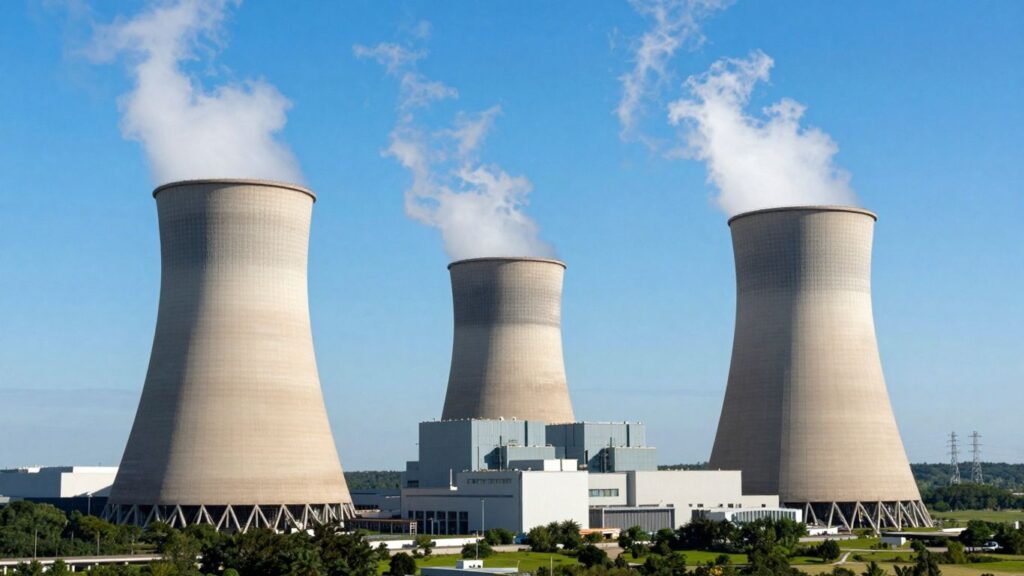The United States is facing a potential nuclear fuel crisis, with concerns mounting over the reliability of the domestic nuclear fuel supply chain. Disruptions stemming from international geopolitical events, particularly the war in Ukraine, have exposed vulnerabilities in the U.S.’s reliance on foreign sources for uranium conversion and enrichment. This situation is prompting calls for greater self-sufficiency and investment in domestic capabilities to ensure the continued operation of the nation’s nuclear power plants.
Key Takeaways
- The U.S. nuclear fuel supply chain is heavily reliant on Russia for conversion and enrichment services.
- Geopolitical tensions and potential sanctions have created significant uncertainty, hindering investment in domestic capacity.
- While some companies are expanding, the lead times for increasing conversion and enrichment capacity are substantial.
- Nuclear energy offers a reliable baseload power source, operating at an average of 93% capacity.
A Looming Fuel Crisis
The U.S. nuclear industry is confronting a critical shortage in its fuel supply chain, largely due to its dependence on Russia for essential services like uranium conversion and enrichment. The ongoing conflict in Ukraine has cast a shadow over the stability of these imports, with Russian state-owned Rosatom playing a significant role in the global market. This reliance has led to a decline in domestic capabilities, from mining to enrichment, leaving the U.S. in a precarious position.
The Gordian Knot of Nuclear Fuel
Experts describe the situation as a "Gordian knot," where miscalculations by governments and a failure of the market have exacerbated the problem. The privatization of enrichment services, intended to foster innovation, has not yielded the expected results, leaving Centrus as the sole private U.S. player in enrichment. While international partners like Urenco and Orano are working to increase capacity, the pace is insufficient to meet potential demand if Russian supply is cut off. This uncertainty about future market conditions discourages the significant investment needed to build new facilities.
Reliability Amidst Uncertainty
Despite these supply chain concerns, nuclear energy itself remains a highly reliable source of power. Nuclear plants operate at an average of 93% of the time, providing a stable baseload that is crucial for energy grids, especially when intermittent renewable sources like wind and solar face challenges due to weather conditions. However, the industry’s ability to maintain this reliability is directly threatened by the current fuel crisis.
Challenges in Scaling Up
Addressing the shortfall requires significant investment and time. Increasing conversion capacity, for instance, is estimated to take around four years, with companies like ConverDyn working to restart and expand operations. Similarly, expanding enrichment capacity is a lengthy process, potentially taking six to seven years even with robust funding. Utilities often hesitate to commit to long-term contracts, which are necessary to incentivize such investments, due to concerns about locking in prices above market rates during off-peak years. The U.S. Department of Energy does maintain a reserve of enriched uranium, but it is only sufficient for a limited number of reloads, and downblending surplus high-enriched uranium faces logistical hurdles.
The Path Forward
The U.S. nuclear industry is at a critical juncture, needing to bolster its domestic fuel production capabilities to ensure energy security. This involves strategic investments, long-term planning, and potentially greater government support to overcome the current reliance on foreign suppliers and secure a stable future for nuclear energy.
Sources
- On the verge of a crisis: The U.S. nuclear fuel Gordian knot — ANS, American Nuclear Society.
- Nuclear energy has a record reliability, despite past disasters<!– –> –
MarketWatch, MarketWatch.












